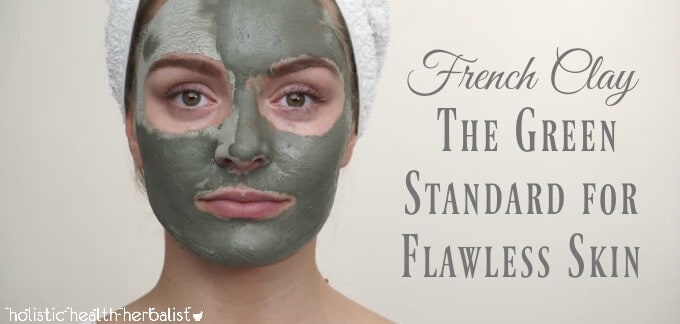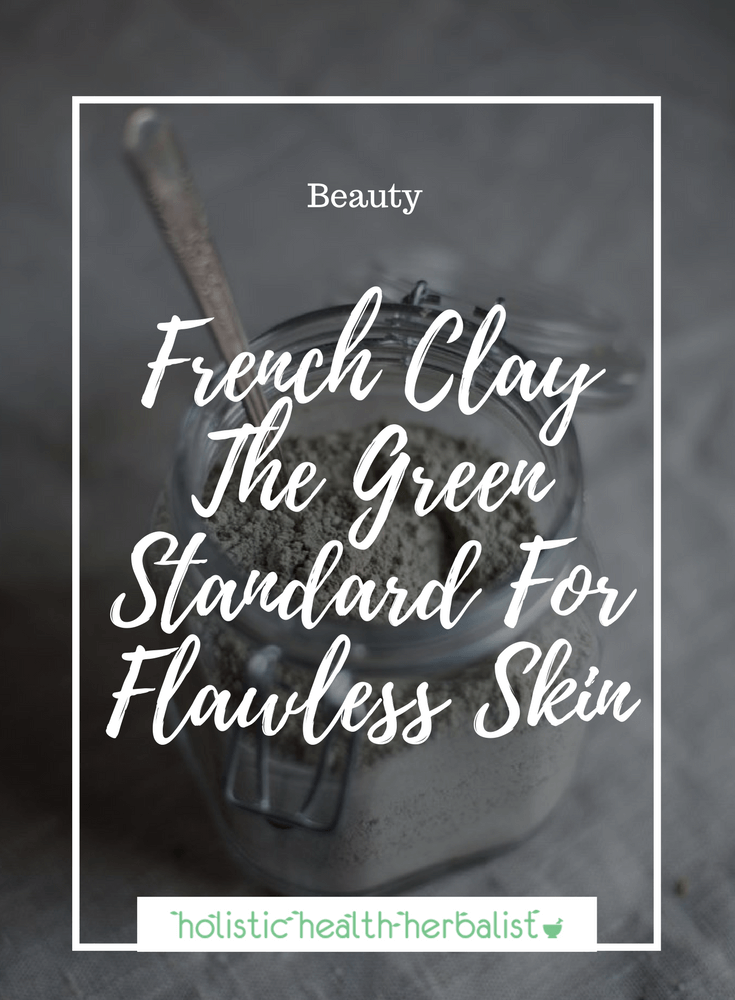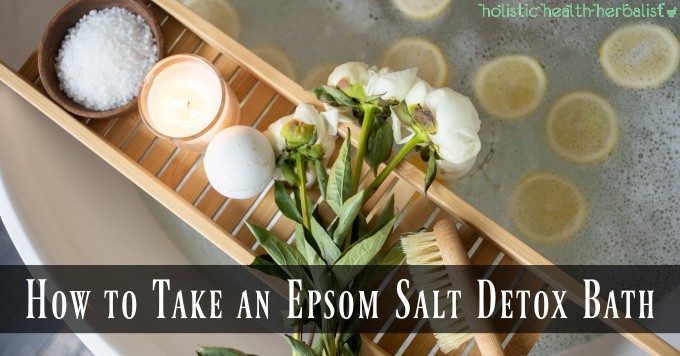French clay (aka Sea clay) is the most used and well known of the facial clays. I know for a fact that the vast majority of us have used the Mint Julep face mask. Why? Because we know it works, we know it's good for healing acne, and we know it's a comfortable "not as stripping as bentonite clay" but "has more oomf than kaolin clay" type of mask. I reach for french green clay the most for an effective all over face mask.
French clay is the best facial clay to use if you have normal to oily skin that can tolerate a bit more purification action . It's not going to be as powerful as bentonite clay (I don't think anything is), but it still packs a proverbial punch on blemishes and blackheads!
The Properties of French Clay/French Green Clay Benefits
Skin type - Normal to Oily acne prone skin. It's also rejuvenating, healing, and pore tightening in action - great for shrinking large pores and removing impurities.
French green clay contains many valuable elements, two of which make it stand out: its iron oxide content and centuries old plant matter. Yup, ever wonder why French clay
is green? That's because of the high amounts of decomposed plant matter that has gone through the cycles of nature to become this luxuriant clay. It is suuuuper important NOT to purchase french clay that isn't a truly green or off green color. The lack of pigment will indicate a poor quality product that is probably full of artificial fillers which you don't want on your skin!
Of course, some companies may add colorants to make their product look a nice shade of green. Just try to be mindful of the source!
How to Use French Clay For Acne Prone Skin
What are the benefits of French Clay?
• Naturally absorbs excess oil
• Pulls bacteria and toxins to the surface of the skin
• Gently exfoliates away dead skin cells and sebum
• Rich in minerals that nourish the skin
• Great spot treatment for acne
• Nourishes skin cells by increasing circulation
I like using french green clay all over my face to pull blackheads to the surface making them easier to remove with a good homemade sugar or salt scrub. The clay gives my skin a nice fresh glow and I find that my skin is less oily the day I use it as a mask in the morning. I highly recommend you give it a try if oily skin is an issue for you.
French Clay Spot Treatment Recipe
• Mix equal amounts french clay and water or herbal tea (try steeping a bay leaf in a mug of boiling water)
• Add to the mixture 1 drop of tea tree and 1 drop of eucalyptus
• Apply a small amount to the blemish (make sure the skin is freshly washed or the mask won’t stay on overnight)
• Leave on overnight, just make sure it's dry before laying down
• Remove with warm water & washcloth the following morning. The blemish will be significantly reduced and less red.
• Try keeping any extra mask in a small non-metal container to use during the week. Just remember to use a sanitary scoop so you don’t contaminate the mask with germs.
Simply Glowing French Clay Mask Recipe
• 1 TBS french clay
• 1 TBS rosewater (read about the awesome benefits of rosewater here). Add it in small amounts until you reach the desired consistency
• Mix and apply
• Let sit for 15-20 min
• Rinse with warm water
French clay is really good for overall skin revitalization and calming redness and irritation. Its ability to remove dirt, make-up, toxins, bacteria, and other impurities make it the standard choice for all professional spa treatments. I know it's my favorite!
Have you used french clay as a face mask before? What did you think of it?
You may also enjoy reading:
Clay and Honey Face Wash for Sensitive Skin
Clay Baths are Powerful Medicine
Quick Tip on the Best way to Mix Facial Clay
Moroccan Red Clay- Blackheads Be Gone!
White Kaolin Clay for Sensitive Skin
Is Bentonite Clay Right for Your Skin Type?








Marie says
Ciao! I odered a bag of green clay online and was wondering if you had any idea of its credibility. Its called 'ARGILA NATURAL' or if you had a recommendation of another brand? maybe one that isnt to steep in price?
Thank you!
Tash says
Hi Marie!
I'm not sure about its credibilty, but the price isn't bad considering you get a good 15 masks out of it 🙂 Most other brands sell a lot less for a higher price!
Alana says
Hello Tash
I was wondering if you had a moment to answer a little question.
I have been washing my face using the Oil Cleansing Method and I have been wondering if somehow my recipe could be turned into a solid bar.
So my question is would it be possible to add a clay to the mix? My fear is, would it
even be possible to obtain and good balance between all the oils and the clay
to get a "soap bar" like feel. Im afraid I'll get a brick or mud result, since most clay soap bars have very few oils.
I use 5 oils and 2 Essential oils. (if that helps?)
Sorry for rambling. Thank you for your time.
Alana
Tash says
Hi Alana!
I found this recipe for you 🙂 It looks like it works! Oil Cleansing Facial Bar Recipe
Dani says
I see this mask removes make-up toxins. Is there a particular make-up that you recommend that isn't as harsh on the skin? Mine isn't too bad but I feel like I get oily quick.. is that just my face or does the make-up have something to do with it?
Tash says
Make-up can definitely have something to do with your skin's oil levels. I have REALLY oily skin and therefore can only use powdered mineral make-up. Liquid make-up just seems to slide off...not very pleasant or nice looking. If you switch over to a more natural brand that is right for your skin type, I really think that you will see a huge difference! I don't even cover my whole face with powder because I'll usually just cover any imperfections with a small amount of mineral make-up. Keep in mind not to use any cleansers that strip your skin too much as this will increase the amount of oil your skin produces. Hope this helps! =)
And as for make-up recommendations, I have used Bare Minerals (found at your local mall) with good results, as well as Mineral Fusion which you can find at Whole Foods.